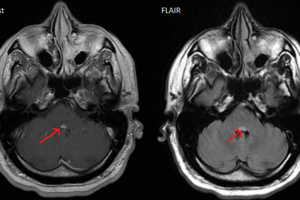The oculocephalic reflex is also called the doll’s eye reflex, so named because dolls that have movable eyes exhibit the same eye movement.
In a comatose patient, if the head is tilted to one side, the eyes move towards the contralateral side. In a conscious patient, such movement is inhibited by the cerebellum. Thus, if a dolls eye reflex is present, it implies that the cortical influence on the brainstem has weakened. Nystagmus after rapid head shaking reflects asymmetric vestibular input.
If the oculcephalic reflex is absent in a comatose patient, it suggests that brainstem reflexes are compromised.


